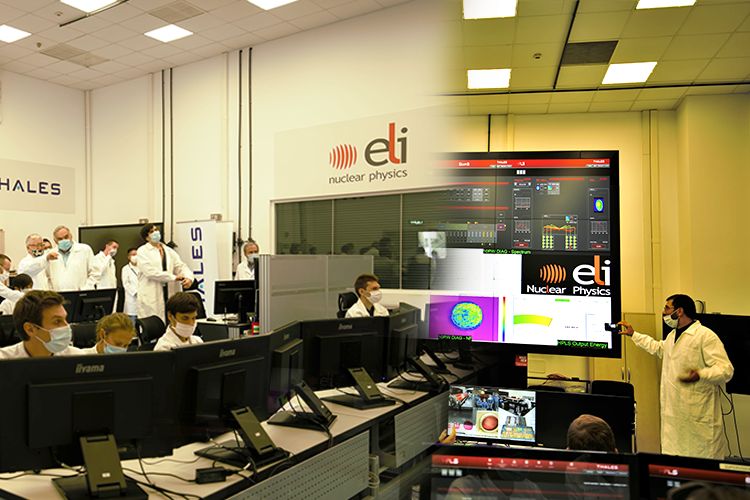
10 PW laser pulse shot through the entire ELI-NP laser system
The 10 PW laser endurance operation has been conducted successfully on August 19th, 2020 through the pulse compressor and the laser beam transport system. The laser shots were repeated at 3 PW, 7 PW, 8 PW, and 10 PW (230 J, 23 fsec) during one hour with one shot per minute. On this performance test, Prof Gerard Mourou, Nobel Physics Laureate in 2018, Romanian government officials, and directors from ELI pillars attended via Zoom.

Signing of the contract for the VEGA System
On October 4th, 2019, the contract for the construction of the Variable Energy Gamma (VEGA) System by the US company Lyncean Technologies Inc. (Fremont, CA) was signed, following an open public tender procedure. The VEGA system, operational at the beginning of 2023, will be the most advanced gamma-ray source in the world, having about one order of magnitude higher gamma-ray flux and at least a factor of two smaller bandwidth, or energy spread, than the current state of the art. The system will have applications in fundamental physics, nuclear physics and astrophysics, as well as applied research in materials science, management of nuclear materials, and life sciences. The contract comprises the design, construction, installation and commissioning of the system, as well as operation and maintenance support for three years after completion.

10.88 PW! WR @ ELI-NP High Power Laser System
ELI-NP's High Power Laser System reached the planned 10 PW (ten millions of billions of Watts) performance and a demonstrative test was successfully conducted.
Reaching 10 PW at ELI-NP is a reference point for scientific research worldwide and a landmark in the history of science. Europe is thus the proud beneficiary via Romania of the most powerful laser in the world. The completion of this unique scientific equipment at the designed parameters paves the way to top-level international experiments in Magurele.
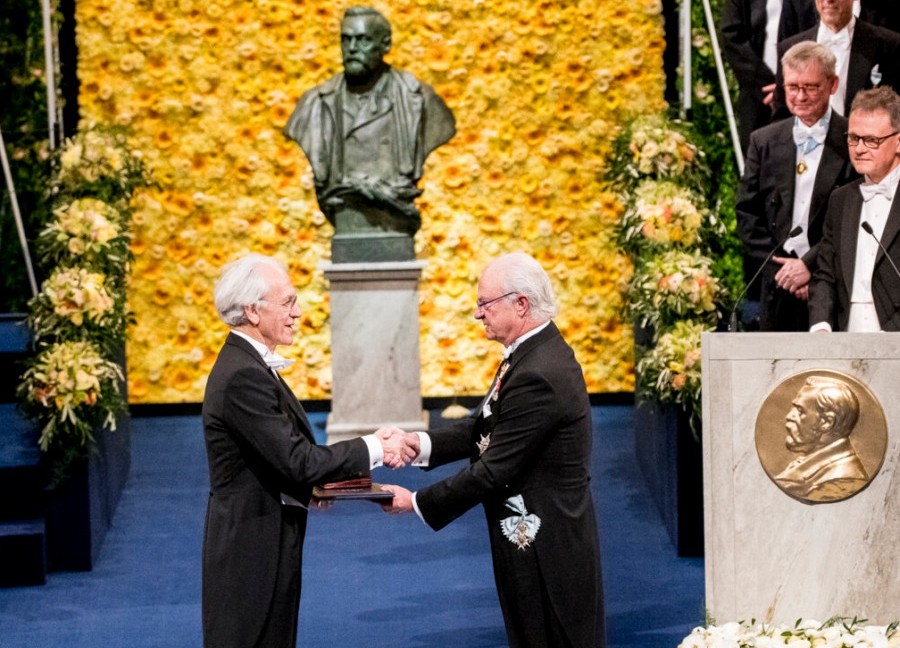
Nobel Prize for Physics for Prof. Gérard Mourou
The 2018 Nobel Prize in Physics was awarded to Professors Arthur Ashkin (USA), Gérard Mourou (France) and Donna Strickland (Canada) "for groundbreaking inventions in the field of laser physics".
Laureates Donna Strickland and Gérard Mourou are physicists of international repute, well known for their outstanding research in the field of laser physics. In 1985 they developed a new method of generating ultra-short optical pulses – Chirped Pulse Amplification (CPA) – a revolutionary method that made the building of high power lasers possible (details).
Professor Gérard Mourou is the initiator and promoter of the European Project ELI-Extreme Light Infrastructure, of which ELI-NP is a part. Professor Mourou contributed to the preparation of ELI-NP’s scientific case. He is also an acting member of the ELI-NP International Scientific Advisory Board and an active collaborator of the ELI-NP research team for the preparations of Day 1 experiments.
Ground-breaking fundamental and applicative scientific research defines both ELI-NP and an emerging field of modern science – nuclear photonics.

Visit of Carlos Moedas, EU Commissioner for Research, Science and Innovation

Visit of François Holland and Klaus W. Iohannis
During a state visit in Romania, French President François Hollande visited ELI-NP alongside Romanian President Klaus W. Iohannis and an important delegation of representatives of the French business environment. The programme of the visit included the economic forum "Future French-Romanian Partnerships", during which an important agreement on high-intensity laser skills training was signed.

Completion of Civil Construction
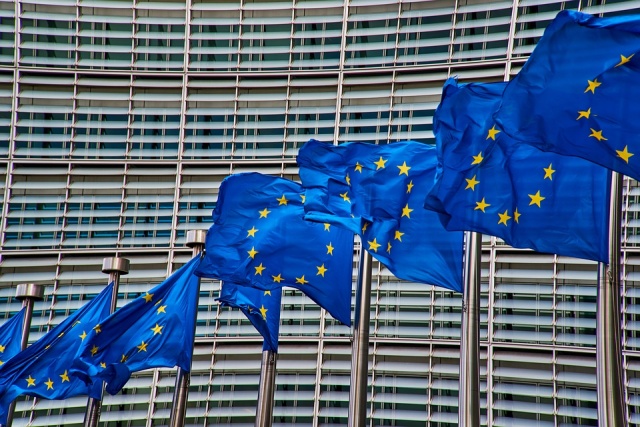
EC approval for Phase II of ELI-NP Project
The European Commission approved the second implementation phase of the ELI-NP project with a new calendar for construction works and equipment installation, the inclusion of auxiliary buildings and procurement of additional research equipment. An additional 17.8 million EUR was also allocated.

Completion of Technical Design
Hachiko Design delivered the Technical Design for the ELI-NP Buildings. Comprising more than 33,000 m2 of new buildings, the design brought cutting-edge technological solutions to Romania. More than 20,000 m2 are buildings for scientific equipment with special requirements, such as stabilization against vibration, clean rooms, etc. The ELI-NP HVAC system is using geothermal heat exchangers for the reduction of the electrical power consumption. The design also accommodates the facility's special needs regarding radiation protection and shielding from the electromagnetic pulses.
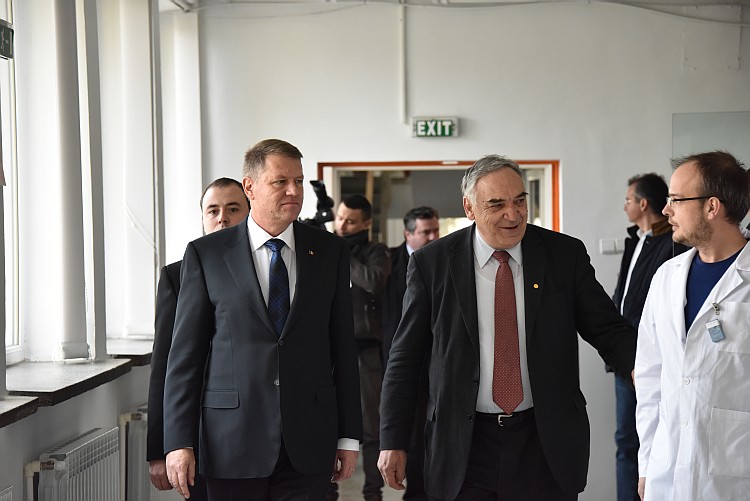
Visit of Romanian President, Klaus Iohannis
On 19 February 2015 Klaus Iohannis, President of Romania, paid a visit to the ELI-NP (Extreme Light Infrastructure – Nuclear Physics)
Research Center under construction in Bucharest-Magurele, on the premises of the "Horia Hulubei"
National Institute for Physics and Nuclear Engineering.
President Iohannis stated that the ambitious scientific laser project in Bucharest-Magurele will
place Romania on the map of cutting-edge fundamental research. He underscored ELI-NP’s important
role for Romanian research and education, as well as its potential to attract back Romanian
researchers with an international career. The President was confident that the implementation
would be successful and expressed his full support for the project. The visit constituted a great
event for the Romanian Physics Community.

Visit of Marie Geoghegan-Quinn, EU Commissioner for Research, Science and Innovation
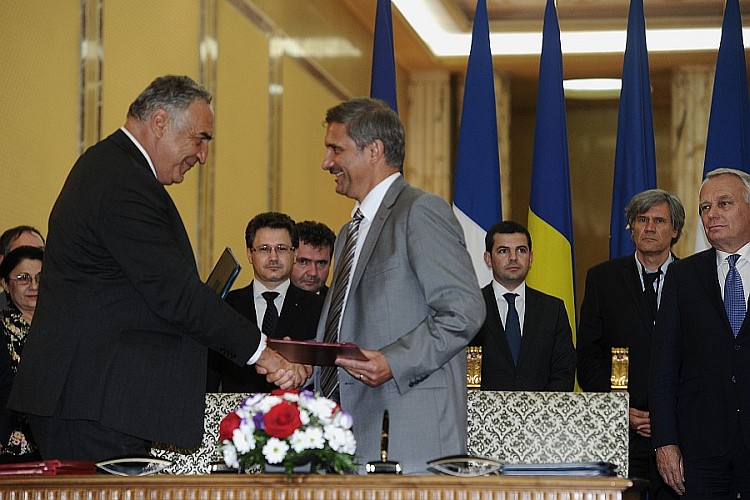
HPLS Contract with THALES Romania
The signing ceremony for the Cooperation Agreement for ELI-NP’s specialists’ training, took place at Victoria Palace, in the presence of the Romanian and French Prime Ministers, Victor Ponta and Jean-Marc Ayrault. The contract between IFIN-HH and THALES OPTRONIQUE SAS - S.C. THALES SYSTEMS ROMANIA S.R.L. Association for the supply of the High Power Laser System was also signed.

Foundation Stone Ceremony – Launch of the ELI-NP Project
The official "Foundation Stone Ceremony" took place in the presence of Prime Minister Victor Ponta, European Commissioner for Regional Policy Johannes Hahn, members of Romanian Government, Romanian and European MPs, local and central administration, and guests from the academic and business environment.
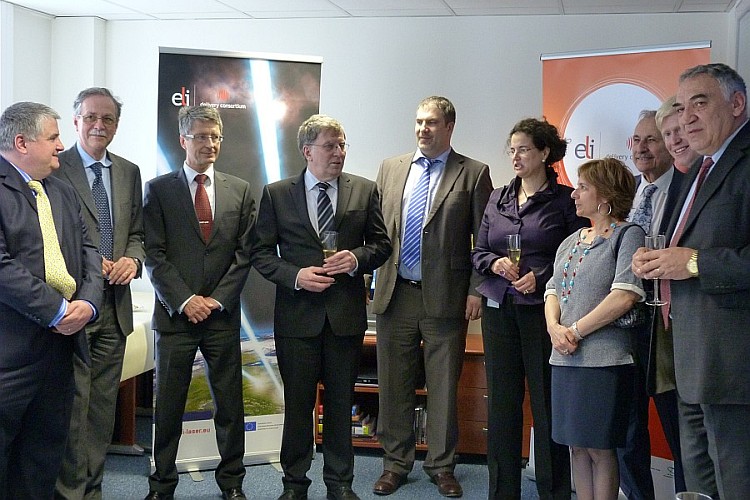
ELI-DC International Association
Extreme Light Infrastructure (ELI), to become the world's first international user facility for laser research, was established as an International Association during a notarial ceremony in Brussels, Belgium. Robert-Jan Smits, Director-General of DG Research and Innovation and Ana Arana Antelo, Head of the Unit "Research Infrastructures", alongside representatives of the European Commission and ELI partner countries attended the ceremony and the subsequent reception.
ELI-DC International Association is a non-profit organisation according to Belgian law (AISBL). It promotes the sustainable development of ELI as a pan-European research infrastructure, it supports the coordinated implementation of the ELI research facilities, and it preserves the consistency and complementarity of the facilities’ scientific missions. It is also responsible for the establishment of an international consortium that will be in charge of the future operation of ELI, preferably in the form of a European Research Infrastructure Consortium (ERIC).
The founding members of the ELI-DC International Association are "Horia Hulubei" Romanian National Institute of Research and Development for Physics and Nuclear Engineering (IFIN-HH), the Hungarian ELI-Hu Research and Development Non-Profit Limited Liability Company, and the Italian Elettra-Sincrotrone Trieste S.C.p.A. The Institute of Physics of the Academy of Sciences of the Czech Republic (Fyzikální ústav AV CR, v.v.i.), DESY - Deutsches Elektronen Synchrotron (Germany), STFC Science & Technology Facilities Council (United Kingdom), and Centre National de la
Recherche Scientifique (CNRS, France) joined the Association after its establishment.
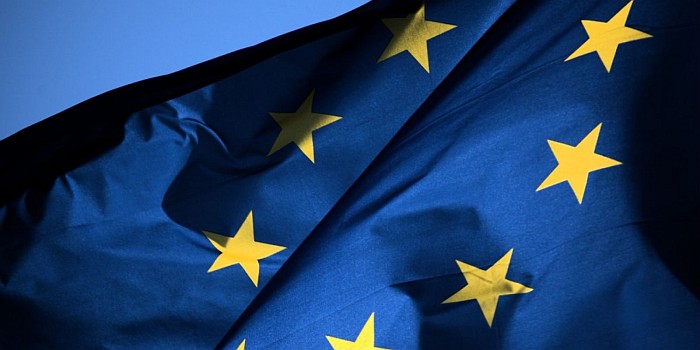
Structural Funds Allocation
The ELI-NP project, an investment of 293.1 million EUR from Structural Funds, was approved by the European Commission. The first phase of the Project (2012-2015) was also approved.
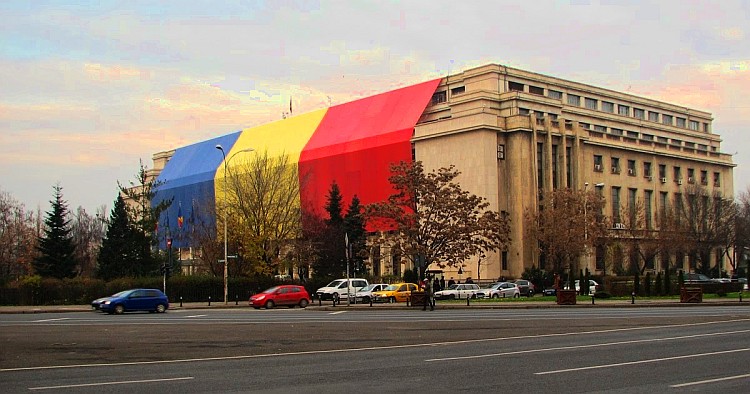
Romanian Government Funding Approval
The Romanian Government approved documents concerning the construction of the ELI-NP facility, an important step forward before submission of the project to JASPERS for evaluation and to the European Commission for approval.

ELI-NP Feasibility Study
The Feasibility Study for ELI-NP was delivered by Proiect Bucuresti S.A. The first stage included the High Power Laser System, the Gamma Beam System, experimental halls and laboratories, the Office Building, the Guest House and Cafeteria. The design brings new solutions for the heating/cooling of the large spaces of the experimental halls (geothermal heat exchangers) and protection against vibrations (active dampers). The new investment in research infrastructure is expected to have an important socio-economic impact on the Măgurele area.
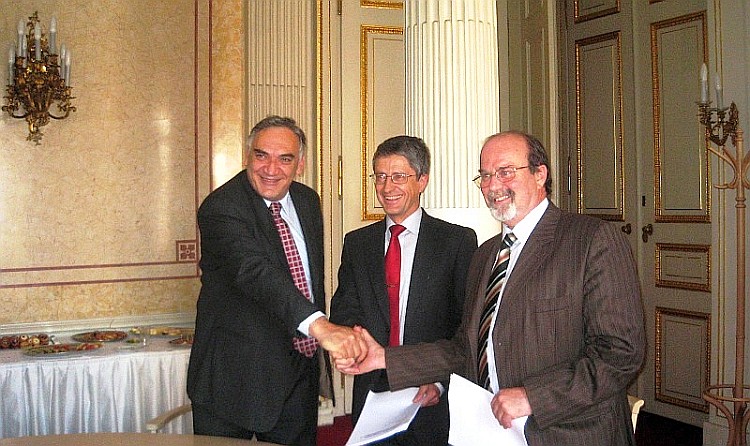
ELI Delivery Consortium - Kick-off Meting
The first meeting for the founding of the ELI-Delivery Consortium (ELI-DC) was held in Prague, with the participation of the representatives of the first three ELI pillars.
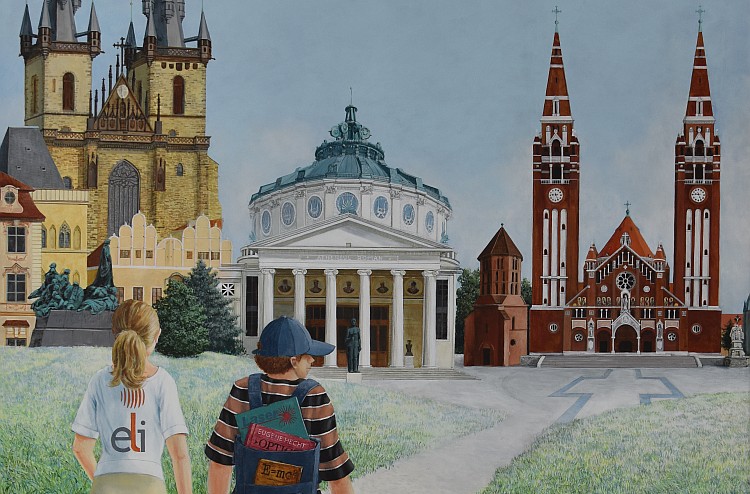
ELI-PP Kick-off Meeting
Sixty scientists, representing 50 laboratories from countries involved in the project, came together on 20 and 21
February 2008 for the kick-off meeting at the Romanian Embassy in Paris to officially launch the preparatory phase of ELI.
Towards Extreme Light: The ELI Project
As part of the 7th Framework Programme, the European Commission entrusted the French National Centre
for Scientific Research/Le Centre national de la Recherche Scientifique (CNRS) with the coordination of the
preparatory phase of the ELI (Extreme Light Infrastructure) project with the aim to construct an ultra-powerful
laser, opening the way to a totally new branch of physics. The project was spearheaded by the Laboratoire
d'Optique Appliquée (LOA), whose director Gérard Mourou was the main catalyst behind the project. Under the
joint trusteeship of the Ecole Nationale Supérieure de Techniques Avancées (ENSTA), Ecole Polytechnique and CNRS,
the preparatory phase spanned three years.
300 persons over 3 years
The European Commission entrusted 6 million EUR to CNRS in order to manage the project. From 2008 to 2011,
the LOA, based in Palaiseau near Paris, spearheaded, orchestrated and coordinated the works of 300 European
researchers in 50 laboratories in 13 different countries of the EU. The study was initially focused on technical
aspects, examining the manufacture of more efficient laser crystals and new optical components.
The chosen project sites for the three ELI pillars were Romania, Hungary and the Czech Republic.